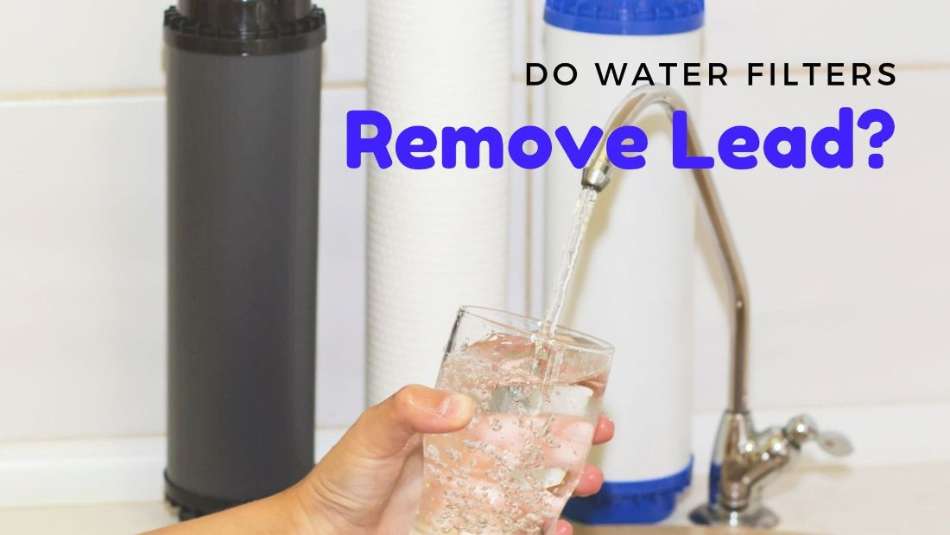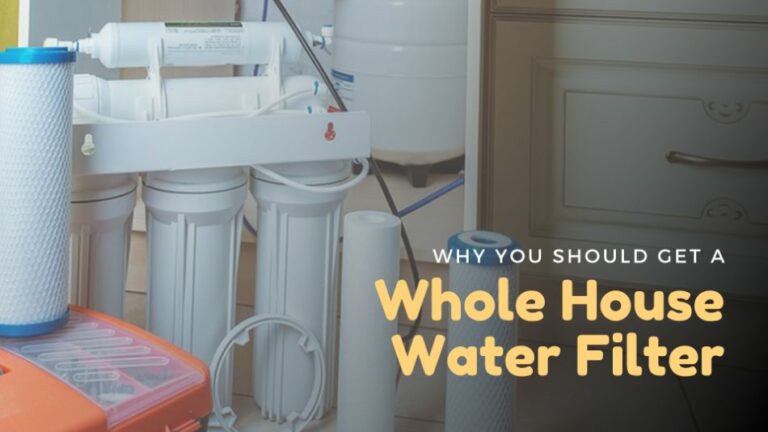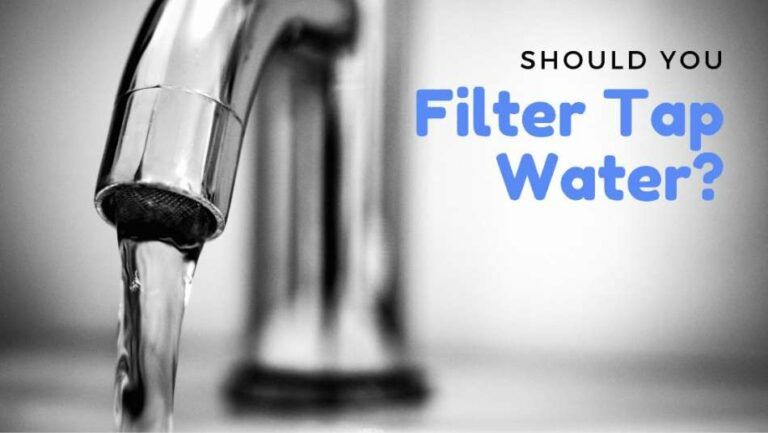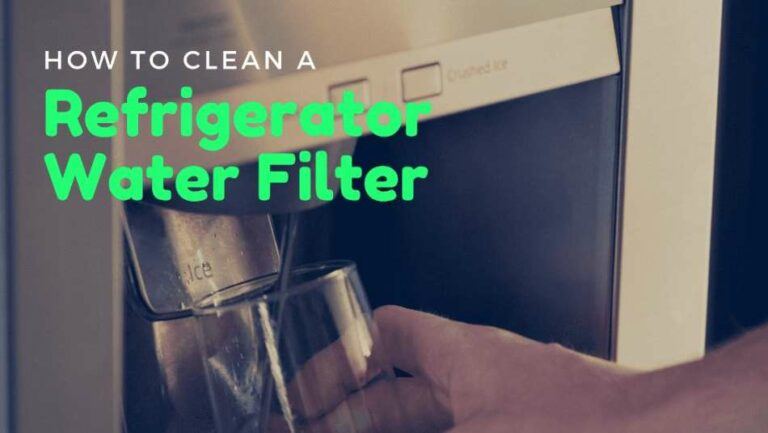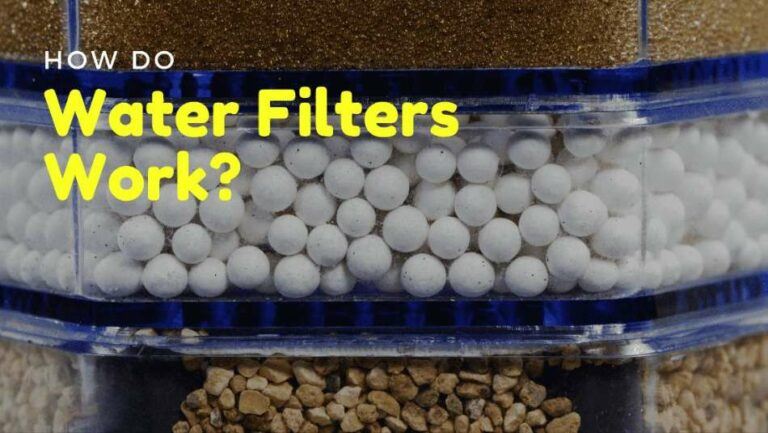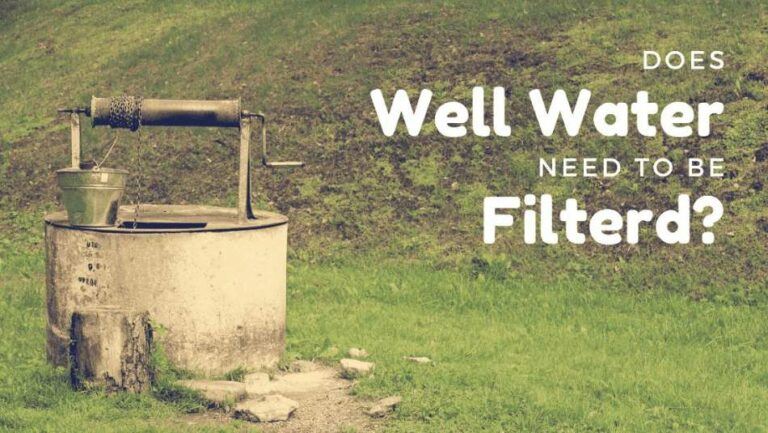Do Water Filters Remove Lead?
Drinking adequate amounts of water is the key to staying healthy. Your body needs at least 2 liters of water every day to maintain energy levels and brain functions. Water helps your body organs work properly, facilitates losing weight, and keeps your skin and hair healthy.
Unfortunately, lead can sometimes be found in tap water. The accumulation of small amounts of lead over long periods of time causes several health problems. This is why you need to take some measures to make sure that you and your family have access to healthy and clean drinking water.
Do Water Filters Remove Lead?
Water filters that use distillation, activated carbon filters, or reverse osmosis all remove or significantly reduce lead. To find out if your water filter removes lead, check the manual (if you saved it) or look up your specific filter online. I’ve included links to 3 water filters that all remove lead at the end of this post.
Why is Lead Present in Water?
Although lead poisoning is rare, it’s still possible. Nowadays, everyone understands the dangerous effects of lead poisoning that’s why it’s no longer used in paints, toys, and food containers. However, long ago, people weren’t aware of the effects of lead and it was extensively used in water pipes that carried drinking water to every household.
Small amounts of lead can be present in your tap water if your property has a lead water tank, old or corroded pipework with lead fittings or because of the solder used in water fixtures. These small amounts are enough to contaminate your water supply.
How Does Lead Affect Our Health?
Exposure to lead causes several health problems, especially to children, infants, and unborn babies. Lead damages the red blood cells and travels through the bloodstream to affect different organs in the body.
Children are at greater risk than adults because of their growing bodies and bones that absorb lead faster. Here are some of the symptoms of lead poisoning in young children and infants.
- Weight loss and loss of appetite.
- Delay in mental and physical development.
- Reduced IQ and learning difficulties.
- Attention disorder and other behavioral problems.
Adults also suffer from several health issues when they consume contaminated water. They might suffer from the following symptoms.
- Mental fatigue and memory loss.
- Abdominal pain, vomiting, and constipation.
- Joint and muscle pain.
- High blood pressure.
How Can I Check if my Water Contains Lead?
The only way you can check for lead is to have your water tested. Lead is colorless, odorless, and doesn’t have a taste. There are, however, some tips that can help you check if your property has lead pipes.
- Look under the kitchen sink. Lead pipes have a dull gray color and the joints look rounded and swollen.
- If you scrape the pipe, you’ll see the shiny metal color.
- Use a metal object to tap on the pipe. If the sound is rather dull, then it’s probably made of lead.
If you suspect that your drinking water contains lead, you can ask the authorities to do a sample test. If the lead content is close to the recommended level of 15 parts per billion, then you need to take action.
What Should I Do?
There are a few things that you can do to make sure that you and your family have access to healthy drinking water.
Avoid Using Hot Water
Hot water dissolves contaminants faster than cold water. This is why you should avoid using hot water in cooking or preparing baby food. Boiling contaminated water doesn’t remove lead.
Flush the Water System
If you’ve been away for a while, let your cold water run for at least a couple of minutes before you start using it. This will get rid of the excess accumulated lead.
Replace Old Fixtures
Have a plumber check your water fixtures. If you have lead pipes, then the best solution is to have them removed. This will reduce or eliminate the amount of lead in your tap water.
Use a Filtration System
If the main water supply is contaminated, then using a filter is the only way you can get rid of lead. There are a few potent techniques that can filter and clean your drinking water.
1. Distillation
This method is quite expensive and takes time, but it requires less maintenance. You don’t have to replace the filtration cartridges often.
2. Activated Carbon Filters
These filters remove lead as well as other heavy metals. However, the cartridges need to be replaced often. Their ability to filter water deteriorates after some time, especially if the water is heavily contaminated.
3. Reverse Osmosis
This method can remove up to 99% of the lead in your drinking water. Complete reverse osmosis is not available commercially because it’s very expensive.
Reviews of the Best Lead-Removing Water Filters
Finding the right filter guarantees that you’ll have access to healthy water. Here are some of the best lead-removing water filters.
As an Amazon Associate we earn from qualifying purchases.
1. Megahome Countertop Water Distiller
Last update on 2026-01-04 at 06:55 / Affiliate links / Images from Amazon Product Advertising API
This water distiller distills 1 gallon of water every 5.5 hours, which is the right speed to get rid of contaminants and toxins. This, however, might not be convenient for a big household where people need frequent access to clean and healthy water.
It’s straightforward to use because the distilled water is collected in a glass chamber. It will also remove VOCs when contaminants change to vapor using an optional activated carbon filter.
2. Brita Tap Water Filter System
Last update on 2026-01-04 at 06:55 / Affiliate links / Images from Amazon Product Advertising API
This system is convenient and removes 99% of lead, chlorine, and other harmful contaminants at an affordable price. It uses a filter made of activated carbon and doesn’t require any tools for installation.
You should keep an eye on the filter-changing reminder light to replace it when needed.
3. Home Master TMULTRA-ERP Ultra
Last update on 2026-01-04 at 06:55 / Affiliate links / Images from Amazon Product Advertising API
The most significant feature of this system is that it increases the water flow while decreasing the wastewater, so it’s suitable for areas with low water pressure. Nevertheless, it’s slightly more expensive than other systems.
There is a UV filter that kills bacteria and microorganisms while removing 99% of lead and other heavy metal contaminants.
Wrap Up
Using water filters will limit your family’s exposure to lead. It’s a must, especially if you have children and infants in your household.
Avoid using water that’s been sitting in the pipes for a while, and flush your water system regularly. If you’re using a filter, pay attention to the water flow and check it regularly to make sure that it’s doing its job.

